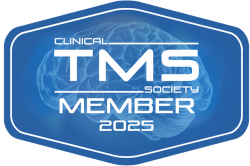
If your mind feels like it’s constantly on high alert—racing with worries, stuck in loops of fear, or demanding repetitive rituals just to feel okay—you’re not alone. Anxiety and obsessive-compulsive disorder (OCD) can make everyday life exhausting. And unless you get proper mental health treatment, these patterns can feel impossible to break.
When you have anxiety and/or OCD, it feels like your mind is working against you. Your thoughts spiral, your fears feel overpowering, and no matter how much you try to rationalize, the anxiety doesn’t just go away. That’s why experts recommend cognitive behavioral therapy (CBT) to help you take back control.
What is Cognitive Behavioral Therapy?
CBT is a goal-oriented, evidence-based therapy that teaches you to spot the patterns linking your behaviors, thoughts and feelings. Rather than spending long hours digging into your past, it focuses on the present and works step-by-step to help you make real, lasting changes. It looks closely at your day-to-day reactions, pinpoints the unhelpful beliefs holding you back, and shows you how to replace them with more balanced and realistic ones.
CBT feels practical because it goes beyond discussing problems and focuses on actively addressing them.You work with your therapist to map out your daily stressors and plan specific ways to respond differently. You learn skills like noticing when negative thought patterns pop up, challenging those thoughts with evidence, and testing new behaviors in real life. Over time, you begin to trust your ability to handle challenges because you see how small shifts in thinking lead to big improvements in mood and behavior.
CBT for Anxiety
Anxiety feels like a never-ending loop of worry that refuses to shut off. Like how your mind jumps straight to worst-case scenarios, your body tenses up at the thought of something going wrong. But you may not realize it follows a pattern – and patterns can be changed.
Cognitive behavioral therapy helps you recognize that pattern, interrupt it, and train your brain to respond differently. You don’t just cope with anxiety—you learn how to manage it so it doesn’t control you.
1. Spot the Thought Traps That Fuel Anxiety
Anxiety thrives on automatic, negative thoughts. They pop up so fast you barely notice them, but they shape how you feel and react.
- You text a friend, and they don’t respond right away—your brain immediately jumps to, “Did I say something wrong? Are they mad at me?”
- You’re asked to speak in a meeting—suddenly, your mind whispers, “You’re going to mess this up. Everyone will think you’re incompetent.”
CBT helps you slow down and notice these thoughts instead of accepting them as fact. In therapy, you might write them down, question them, and examine the evidence. More often than not, you realize anxiety has been feeding you worst-case scenarios that aren’t even true.

2. Reframe Thoughts Before They Spiral
Once you start catching anxious thoughts, the next step is learning to challenge them. You’re not trying to force yourself to “think positive” but rather to see situations clearly—without the fear filter.
- Instead of “I’m going to embarrass myself in this presentation,” shift to, “I might feel nervous, but I’ve prepared, and I can handle this.”
- Instead of “Something terrible is going to happen,” remind yourself, “I’ve felt this way before, and nothing bad happened. I can get through this.”
CBT teaches you to be skeptical of anxiety’s lies. The more you practice reframing, the easier it becomes to shut down those thoughts before they spiral into full-blown panic.
3. Train Your Brain to Stay Calm Under Pressure
Anxiety doesn’t just live in your thoughts—it affects your whole body. Your heart races, your muscles tense up, and suddenly, you’re in fight-or-flight mode. That’s why CBT includes techniques that physically signal your brain that you’re safe.
- Deep breathing slows your heart rate and tells your nervous system to relax.
- Progressive muscle relaxation helps release built-up tension in your body.
- Mindfulness keeps you grounded in the present instead of lost in anxious thoughts.
These techniques are like mental training. The more you practice them, the better your brain handles stress without sending you into panic mode.
CBT for OCD
OCD brings its own set of challenges. Unwanted, intrusive thoughts create intense fear or distress, and compulsions—repetitive behaviors or mental rituals—feel like the only way to ease the anxiety. But the relief never lasts. The cycle repeats, making you feel trapped. CBT—specifically exposure and response prevention (ERP)—can help you break free from OCD’s grip.
1. Exposure and Response Prevention
OCD thrives on fear. It convinces you that if you don’t do something—wash, check, count, repeat—something terrible will happen. ERP helps you prove to yourself that those fears are false.
Here’s how it works:
- You gradually expose yourself to the source of your fear or intrusive thoughts in a safe, controlled way.
- But instead of following through with your usual compulsion, you resist it and sit with the discomfort.
At first, the anxiety spikes—it’s uncomfortable, even terrifying. But then something surprising happens: the fear starts to fade. Your brain realizes nothing terrible happens when you don’t complete the ritual. The more you practice, the weaker OCD’s grip becomes.
For example:
- If you compulsively check the stove 10 times before leaving, ERP might start by checking it once and then walking away.
- If you avoid touching doorknobs, you might practice touching one without immediately washing your hands.
Over time, your brain stops sending those false alarms, and the compulsions lose their power.

2. Challenging OCD’s Lies: Separating Fact from Fear
OCD makes everything feel like a threat. “If you don’t check, you’re irresponsible.” “If you have this thought, it must mean something bad.” But here’s the truth—OCD is full of distortions that trick you into believing its lies.
CBT helps you break these cognitive distortions down and see them for what they are: just thoughts, not facts.
- Instead of “If I don’t wash my hands a certain way, I’ll get sick,” you learn to say, “I’ve touched thousands of things without getting sick. I don’t need this ritual to stay safe.”
- Instead of “Having this thought must mean I’m a bad person,” you realize, “Thoughts don’t define me—my actions do.”
OCD’s biggest weakness? When you stop believing its lies, it loses its control over you.
Beyond Anxiety and OCD
One of the great things about CBT is that it is adaptable. It is helpful not just for anxiety or OCD but also for people with depression, chronic fatigue syndrome, or substance use disorder. It addresses the same core issue: unhelpful thought patterns that fuel emotional distress.
CBT also supports emotional regulation by teaching you to recognize early signs of stress. You learn to pause before reacting. That skill is priceless for anyone dealing with mental health diagnoses, whether it is OCD, anxiety, or another condition.
What Happens in a Mental Health Clinic?
If you decide to explore CBT, you’ll likely meet with a therapist at a mental health clinic, where the process is structured and tailored to your specific challenges. Here’s what you can expect:
- Initial assessment – You’ll talk about what you’re struggling with, and your therapist will help identify the thought patterns and behaviors driving your anxiety or OCD.
- Goal setting – Together, you’ll set clear, realistic goals. Maybe it’s reducing panic attacks, resisting compulsions, or facing situations you’ve been avoiding.
- Learning coping skills – Your therapist will guide you through exposure and response prevention (ERP) for OCD or thought reframing and relaxation techniques for anxiety. Each session builds on the last, tracking your progress and adjusting the plan as needed.
At Relief Mental Health, we provide personalized, evidence-based treatment for anxiety and OCD. We’ll tailor CBT to your needs to help break unhelpful patterns, build coping skills, and regain control.


